On health and hope
photos: details from my office wall hanging, stitched by street children at a shelter in Sao Paulo, Brazil
When health weakens, hope steps in
Threads of hope are being stitched into the lives of people who find themselves seriously or chronically ill today. This happens every day, everywhere in the world, but there are days such as this one when our attention is drawn to this part of the human condition.
The world watches and waits: Ariel Sharon has had a massive stroke and the state of the Israeli leader's health could well be a factor in regional stability. Behind the political drama lies the personal one of diminishing hope in the face of failing health - and yet hope, in one of its varieties, is clearly there.
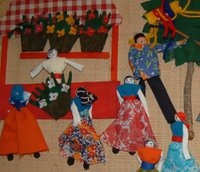 Down the road from me, at Morges Hospital, a frail girl of 16 lies in intensive care following a major epileptic seizure yesterday. She has such seizures every few months, and given the fragility of her health - she is able to take a few steps only now and again - they weaken her. Family and friends wait patiently and hope.
Down the road from me, at Morges Hospital, a frail girl of 16 lies in intensive care following a major epileptic seizure yesterday. She has such seizures every few months, and given the fragility of her health - she is able to take a few steps only now and again - they weaken her. Family and friends wait patiently and hope.Nearby, as I write, my mentally handicapped daughter is being woken up. A nurse is in her room, at her boarding school, putting a patch on her arm in order to draw blood a few minutes later for metabolic tests. She is 13, weighs less than most 10 year old girls and she has a variety of chronic health problems. After the tubes are packed off to the laboratory she will sit down to a large breakfast, then walk to school, an independence of which she is proud. I'm not with her because for my daughter this is simply another medical procedure to be tolerated with as little fuss as possible.
AIDS, malaria and TB -
money provides help, and with it hope
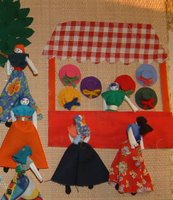 I've just finished reading about results during 2005 at The Global Fund, which finds and disburses money for AIDS, tuberculosis and malaria. As a journalist, I know that editors like gloom and doom stories; as a communications consultant I know that you have to write about success to encourage hope, which in turn brings in more funds. No one likes to invest in a black hole.
I've just finished reading about results during 2005 at The Global Fund, which finds and disburses money for AIDS, tuberculosis and malaria. As a journalist, I know that editors like gloom and doom stories; as a communications consultant I know that you have to write about success to encourage hope, which in turn brings in more funds. No one likes to invest in a black hole.Stories like this one give people hope and the media people at The Global Fund know that even hard-boiled editors will want to balance out the gloom of still-growing HIV numbers with the rapid climb (75% since May) in numbers of people receiving antiretroviral treatments.
The nature of hope, in health
But what exactly are we all hoping for? When your health is good, and those near to you are healthy, you imagine that we must all be hoping for the same: a cure, a miracle, a windfall treatment that will restore or provide for the first time, sound health.
Hope doesn't work that way. If it did, sickness would lead rapidly to suicide far more often than it does. Serious health problems, our own or others', teach us much about ourselves. We learn our limits and we discover new strengths. Our values shift. When my daughter recently visited a new doctor, kind and generous, the woman said sadly at the end, "She is so beautiful - isn't it a shame." My reaction was that it's a shame anyone should think my daughter's beauty is wasted. The loveliness of any girl is there to brighten our days. I hope to help the doctor learn this.
Hope is a gracious chameleon
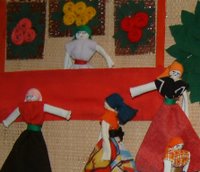 While we might start out looking for, and hoping for, elusive miracles, many of us are obliged to cross a threshold into accepting that our lives will never be the same. Poor health, sickness, uncertainty and even death are part of that new room we walk into, and our first reaction is to seek hope in some other form.
While we might start out looking for, and hoping for, elusive miracles, many of us are obliged to cross a threshold into accepting that our lives will never be the same. Poor health, sickness, uncertainty and even death are part of that new room we walk into, and our first reaction is to seek hope in some other form.In my case, I hope that this morning's discomfort for my daughter will help us improve her treatment so she has less discomfort in her daily life. When she has a good day I hope that she will have the same, the next day. When she has a bad day, I hope that we will all find a way to cope, and I focus on that.
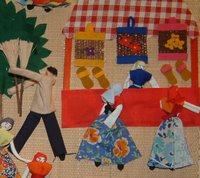 I've had people say to me that they admire our courage because they don't know how they would live with a health problem that after 13 years has no clear diagnosis and therefore no clear treatment or prognosis. I don't think we are courageous, because that implies bravery. Hope is kinder to people than that: we don't need to be brave as long as we have some hope. It sustains us, no matter what form it takes. It can help us to know when to take action and when to stop because sometimes being passive is part of the process of finding new strength.
I've had people say to me that they admire our courage because they don't know how they would live with a health problem that after 13 years has no clear diagnosis and therefore no clear treatment or prognosis. I don't think we are courageous, because that implies bravery. Hope is kinder to people than that: we don't need to be brave as long as we have some hope. It sustains us, no matter what form it takes. It can help us to know when to take action and when to stop because sometimes being passive is part of the process of finding new strength.Hope is there, even when sickness leads to death. People who are religious hope, and presumably pray, for a good afterlife. There is hope without religion - for freedom from pain, for the love of family and friends, for peace.
If sometimes our own hopes seem to other people to be invisible threads, they should never be under-estimated. Invisible threads can be very strong.



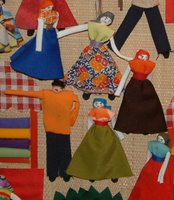
0 Comments:
Post a Comment
<< Home